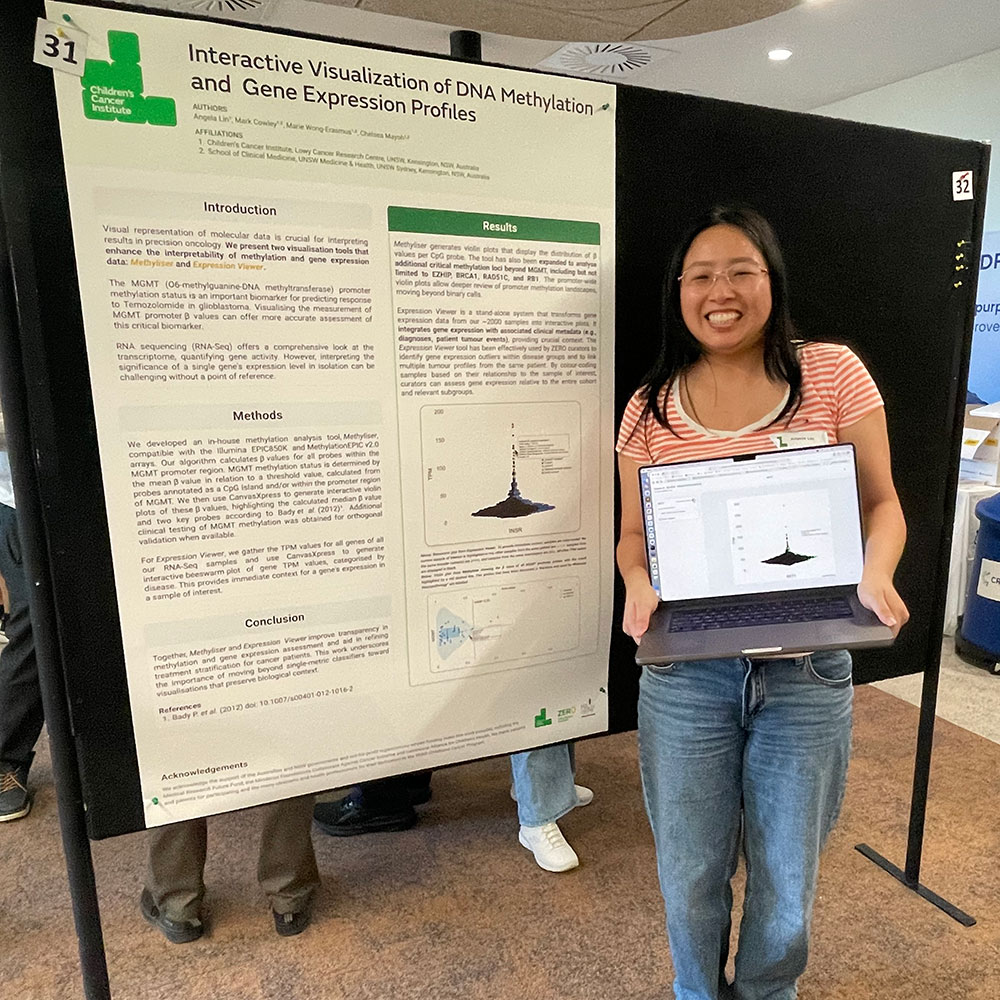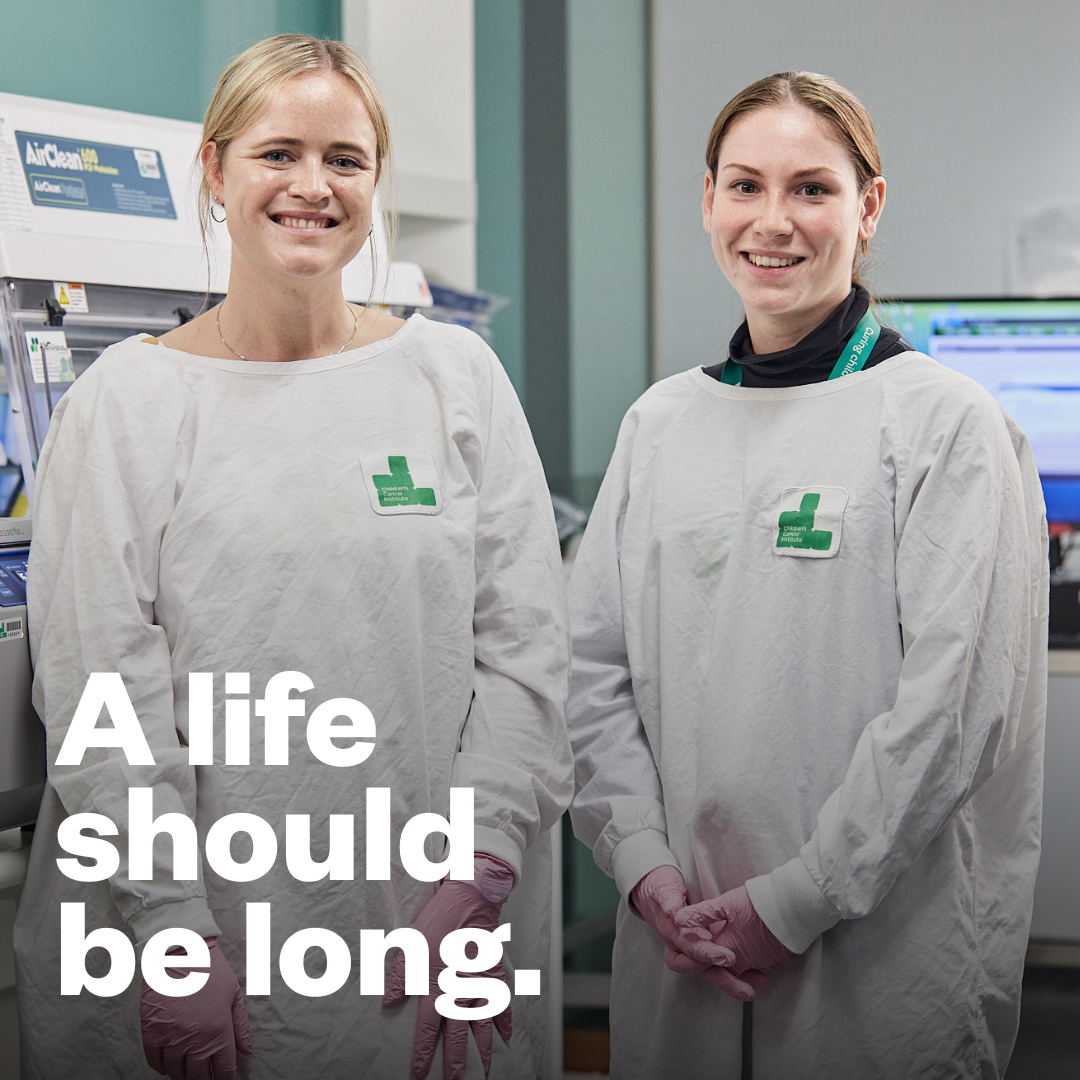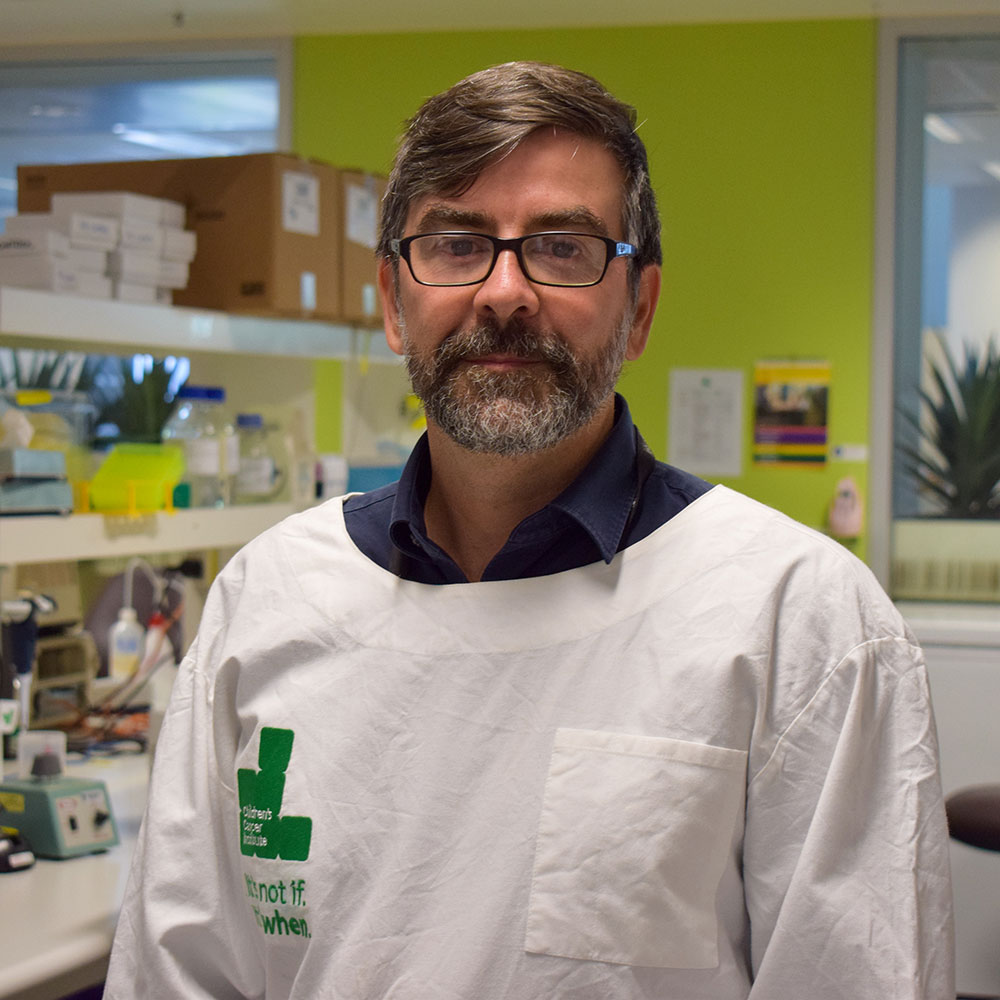Last week, three of our young neuroblastoma researchers received funding from NSW Government to support their research into innovative, new treatment approaches. Just as cancer is not one single disease, with one single cure, there are also different sub-types of neuroblastoma. Different people and different types of cancer respond in unique ways, which is why research into new treatments is so important.
What is neuroblastoma?
- It’s a type of childhood cancer of cells involved in the development of the nervous system
- It’s the most common solid tumour in early childhood
- It claims more lives of children under 5 than any other cancer
- Aggressive neuroblastoma has a survival rate of less than 50% and less than 15% for relapsed neuroblastoma
- On average each year over 20 babies and toddlers in Australia die from this disease
DFMO and the polyamine puzzle
- Neuroblastoma has high levels of compounds called polyamines which are essential for rapidly growing cells
- Our data shows that polyamine depletion (starving the cancer cells of these compounds) halts tumour growth, particularly effective in neuroblastoma, so is an exciting new treatment opportunity for children with high-risk cancers
- As a direct result of our research into a drug called difluoromethylornithine, or DFMO, an international clinical trial* is underway which is showing promising early results when combined with chemotherapy
- We will build on the exciting results from the DFMO clinical trial by testing new therapeutic approaches, each involving DFMO in combination with with other novel drugs and with standard chemotherapy
- The most effective of these new approaches will be tested in the clinic and results will be compared to find the safest, most effective treatment for children with neuroblastoma. This means we’re getting our research from the lab bench to a child’s bedside as quickly as possible.
*The international clinical trial for children with relapsed neuroblastoma, being led by Sydney Children’s Hospital, Randwick, is the result of ground breaking research by Children’s Cancer Institute. The cost of the DFMO for this clinical trial is being supported by The Kids Cancer Project and Lions Childhood Cancer Research Foundation.
New approaches

The drug DFMO is one of a number of treatment opportunities we’re investigating to target neuroblastoma. Last week NSW Government announced research grants from Cancer Institute NSW to support cancer research with a particular focus on childhood cancer. We’re particularly pleased that grants to three of our young scientists will help support their research into promising new approaches to targeting neuroblastoma:
- Dr Dan Carter’s project is based on his discovery from single cell profiling that a small group of genes controlling cell division are substantially increased in the cells that initiate tumours. He will investigate if increased levels of the genes are needed for neuroblastoma to begin and then test if drugs inhibiting the genes could be a new therapy for high risk subtypes of neuroblastoma.
- Dr Pei Yan Liu will define the role in promoting neuroblastoma tumour growth of a new long, non-protein coding RNA she recently discovered. The RNA is found in large amounts in high-risk neuroblastoma. Dr Liu will test new combination therapies to target the RNA.
- Dr Orazio Vittorio (shown above) will evaluate the potential of dextran-catechin as a future neuroblastoma treatment. This molecule is a chemically-modified natural compound that targets copper metabolism, an emerging target for anticancer drug design.
Listen to an interview with our Executive Director Professor Michelle Haber AM on radio station 2BS Bathurst about why neuroblastoma research is important.
Top image: Solving the polyamine puzzle through research will lead to better neuroblastoma treatments.















